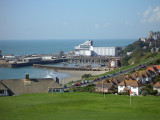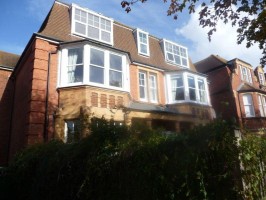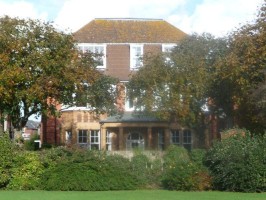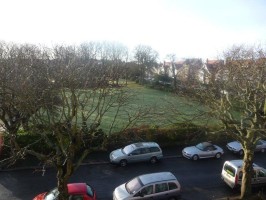Folkestone in 2016
Folkestone is one of the sunniest places in England. The town occupies a beautiful stretch of Channel coast set between the North Downs to the east and Romney Marsh to the south west. The area has inspired countless artists and writers in the past and, increasingly, is now home to a new creative community attracted to the Creative Quarter in Folkestone's traditional Old Town.
Folkestone's location on the south Kent coast places the town in an enviable position, with good transport links to Europe and to London. The town's success in the 19th century can be attributed to the arrival of the railway, and improvements to railway infrastructure in the 21st century now offer the potential to help the renaissance of the town. High Speed One provides an opportunity to help reverse Folkestone's decline, with journey times to and from London reduced to less than an hour.
Folkestone's architecture includes splendid examples of traditional Victorian and Edwardian grandeur and, more recently, the town has seen important architectural commissions from the practices of
Lord Foster and Sir Michael Hopkins. This all serves to create an eclectic mix of styles, where urban development of the highest quality sits well alongside the natural landscape of the Kent
coast.
One of Folkestone's most famous attractions is the Leas, a cliff top walk from the town centre westwards with stunning views across the English channel to France. The recently constructed Coastal Park, a popular attraction for locals and vistors alike, is connected to the Leas by a "zig-zag path" which was constructed in Victorian times. Less energetic visitors can reach the Leas from the Coastal Park by taking the Leas Cliff lift. The grade II-listed lift was constructed in 1885 and is one of the oldest remaining water lifts in the UK.
Although it has seen better days, Folkestone harbour is still an interesting place to visit. It was built in stages between the 1840s and early 1900s around the old fishing port. Over the years passenger and freight ferries, and cargo ships operated from the port to various destinations, the best-remembered link being that between Folkestone and Boulogne. By the late 1990s ferry operators decided that ferry operations had become unsustainable and the last ferry link was closed down in 2000. The harbour and seafront is at the centre of the Masterplan for Folkestone redevelopment which is being undertaken by architects Sir Terry Farrell and Partners for the Folkestone Harbour Company.
To the east of the harbour lies Sunny Sands beach; a popular location for swimming and beach activities in the summer months.













